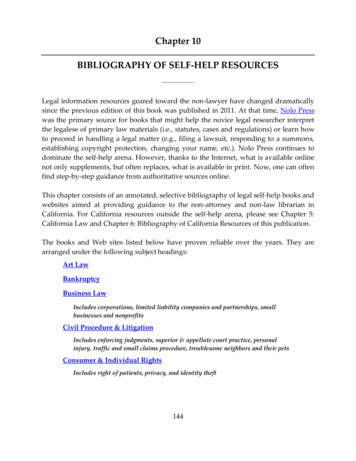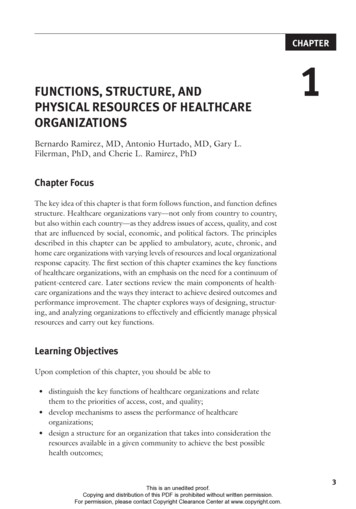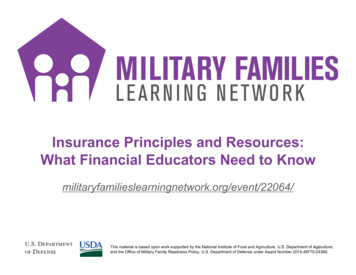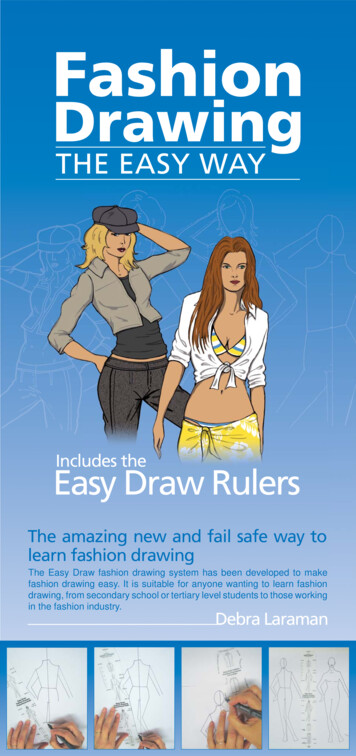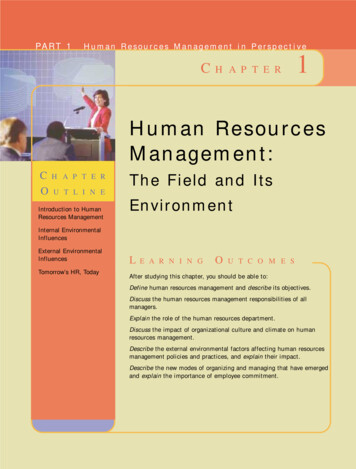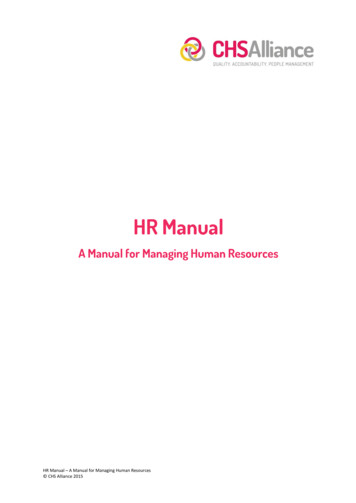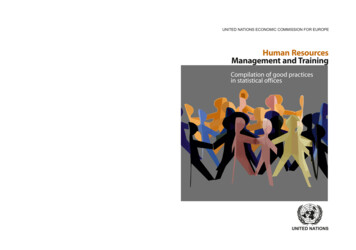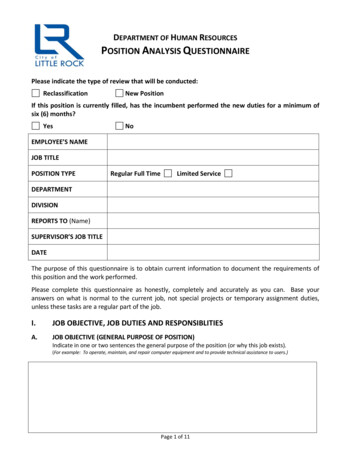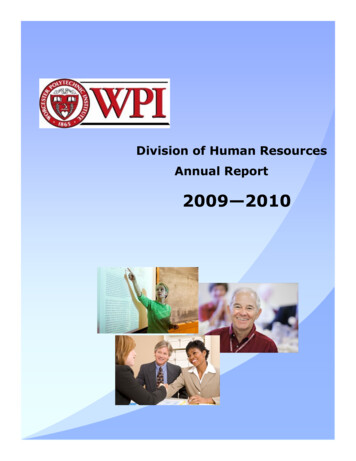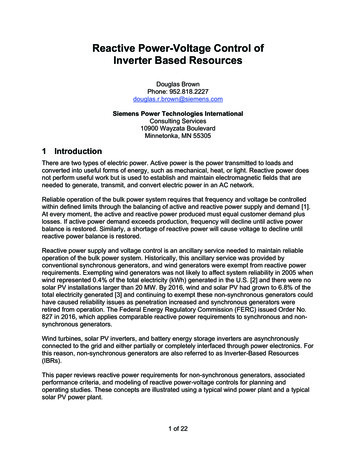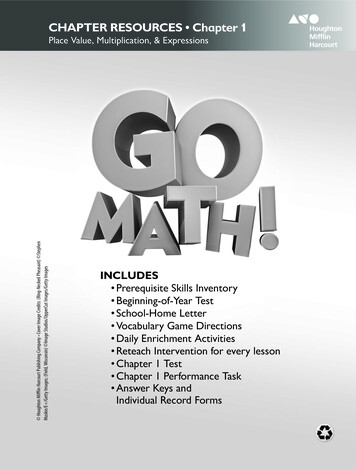
Transcription
CHAPTER RESOURCES Chapter 1 Houghton Mifflin Harcourt Publishing Company Cover Image Credits: (Ring-Necked Pheasant) StephenMuskie/E /Getty Images; (Field, Wisconsin) Image Studios/UpperCut Images/Getty ImagesPlace Value, Multiplication, & ExpressionsINCLUDES Prerequisite Skills Inventory Beginning-of-Year Test School-Home Letter Vocabulary Game Directions Daily Enrichment Activities Reteach Intervention for every lesson Chapter 1 Test Chapter 1 Performance Task Answer Keys andIndividual Record Forms
Copyright by Houghton Mifflin Harcourt Publishing CompanyAll rights reserved. No part of the material protected by this copyright may be reproduced or utilized in anyform or by any means, electronic or mechanical, including photocopying, recording, broadcasting or by anyother information storage and retrieval system, without written permission of the copyright owner unless suchcopying is expressly permitted by federal copyright law.Only those pages that are specifically enabled by the program and indicated by the presence of the printicon may be printed and reproduced in classroom quantities by individual teachers using the correspondingstudent’s textbook or kit as the major vehicle for regular classroom instruction.Common Core State Standards Copyright 2010. National Governors Association Center for Best Practicesand Council of Chief State School Officers. All rights reserved.This product is not sponsored or endorsed by the Common Core State Standards Initiative of the NationalGovernors Association Center for Best Practices and the Council of Chief State School Officers.HOUGHTON MIFFLIN HARCOURT and the HMH Logo are trademarks and service marks of HoughtonMifflin Harcourt Publishing Company. You shall not display, disparage, dilute or taint Houghton Mifflin Harcourttrademarks and service marks or use any confusingly similar marks, or use Houghton Mifflin Harcourtmarks in such a way that would misrepresent the identity of the owner. Any permitted use of HoughtonMifflin Harcourt trademarks and service marks inures to the benefit of Houghton Mifflin Harcourt PublishingCompany.All other trademarks, service marks or registered trademarks appearing on Houghton Mifflin HarcourtPublishing Company websites are the trademarks or service marks of their respective owners.
ContentsOverview & Diagnostic . vFormative and Summative Assessment . viAssessment Technology . viiData-Driven Decision Making . viiiPerformance Assessment . ixPortfolio Assessment . xCommon Core Assessment Formats . xiTest Answer Sheet . xvPrerequisite Skills Inventory . 1-1Beginning-of-Year Test . 1-7Chapter 1 School-Home Letter (English) . 1-17Chapter 1 School-Home Letter (Spanish) . 1-18Vocabulary Game . 1-191.1 Reteach . 1-211.1 Enrich . 1-221.2 Reteach . 1-231.2 Enrich . 1-241.3 Reteach . 1-251.3 Enrich . 1-261.4 Reteach . 1-271.4 Enrich . 1-28Chapter Resources Houghton Mifflin Harcourt Publishing CompanyiiiTable of Contents
1.5 Reteach . 1-291.5 Enrich . 1-301.6 Reteach . 1-311.6 Enrich . 1-321.7 Reteach . 1-331.7 Enrich . 1-341.8 Reteach . 1-351.8 Enrich . 1-361.9 Reteach . 1-371.9 Enrich . 1-381.10 Reteach . 1-391.10 Enrich . 1-401.11 Reteach . 1-411.11 Enrich . 1-421.12 Reteach . 1-431.12 Enrich . 1-44Chapter 1 Test . 1-45Chapter 1 Performance Task . 1-51Answer Keys . 1-56Individual Record Forms . 1-71Chapter Resources Houghton Mifflin Harcourt Publishing CompanyivTable of Contents
Overview of Go Math! AssessmentHow Assessment Can Help Individualize InstructionThe Chapter Resources contains several types of assessment for use throughoutthe school year. Assessment pacing can also be found in the Go Math! TeacherEdition. The following pages will explain how these assessments help teachersevaluate students’ understanding of the Common Core standards. TheseChapter Resources also contain Individual Record Forms to help guide teachers’instructional choices and to improve students’ performance.Diagnostic AssessmentPrerequisite Skills Inventory in the Chapter Resources should be given at thebeginning of the school year or when a new student arrives. This short-answertest assesses students’ understanding of prerequisite skills. Test results provideinformation about the review or intervention that students may need in order to besuccessful in learning the mathematics related to the standards for this grade level.Suggestions for intervention are provided for this inventory.Beginning-of-Year Test in the Chapter Resources contains items that arepresented in Common Core assessment format. This test should be given earlyin the year to determine which on-grade level skills that students may alreadyunderstand. This benchmark test will facilitate customization of instructional contentto optimize the time spent teaching specific objectives. Suggestions for interventionare provided for this test.Show What You Know in the Student Edition is provided for each chapter. Itassesses prior knowledge from previous grades as well as content taught earlierin the current grade. Teachers can customize instructional content using theintervention options suggested. The assessment should be scheduled at thebeginning of each chapter to determine if students have the prerequisite skills forthe chapter.Chapter Resources Houghton Mifflin Harcourt Publishing CompanyvOverview
Formative AssessmentLesson Quick Check in every lesson of the Teacher Edition monitors students’understanding of the skills and concepts being presented.Lesson Practice for every lesson in the Student Edition helps students achievefluency, speed, and confidence with grade level skills and concepts.Mid-Chapter Checkpoint in the Student Edition provides monitoring of students’progress to permit instructional adjustments, and when required, to facilitatestudents’ mastery of the objectives.Middle-of-Year Test in the Chapter Resources assesses the same standards asthe Beginning-of-Year Test, allowing students’ progress to be tracked and providingopportunity for instructional adjustments, when required.Portfolios encourage students to collect work samples throughout the chapter as areinforcement of their progress and achievements.Summative AssessmentChapter Review/Tests in the Student Edition indicate whether additionalinstruction or practice is necessary for students to master the concepts and skillstaught in the chapter. These tests include items presented in a variety of CommonCore assessment formats.Chapter Tests in the Chapter Resources evaluate students’ mastery of conceptsand skills taught in the chapter. These tests assess the mastery of the CommonCore standards taught in a chapter. Item types on these tests are similar to ones astudent would encounter on a test to assess Common Core standards.Performance Assessment Tasks in the Chapter Resources are provided for eachChapter and Critical Area. Each assessment contains several tasks to assessstudents’ ability to use what they have learned and provides an opportunity forstudents to display their thinking strategies. Each set of tasks is accompanied byteacher support pages, a rubric for scoring, and examples of student work for thetask.End-of-Year Tests in the Chapter Resources assess the same standards asthe Beginning- and Middle-of-Year Tests. It is the final benchmark test for thegrade level. When students’ performance on the End-of-Year Test is comparedto performance on the Beginning- and Middle-of-Year Tests, teachers are able todocument students’ growth.Chapter Resources Houghton Mifflin Harcourt Publishing CompanyviOverview
Getting Ready Tests in the Getting Ready Lessons and Resources evaluate thestudents’ understanding of concepts and skills taught as readiness for the nextgrade level. These tests are available in a mixed-response format comprised ofmultiple choice and short answer.Assessment TechnologyThe Personal Math Trainer offers online homework, assessment, and intervention.There are pre-built tests that lead to intervention and a personal study plan.Algorithmically generated technology-enhanced items have wrong answer feedbackand learning aids.Chapter Resources Houghton Mifflin Harcourt Publishing CompanyviiOverview
Data-Driven Decision MakingGo Math! allows for quick and accurate data-driven decision making so youcan spend more instructional time tailoring to students’ needs. The Data-DrivenDecision Making chart with Diagnostic, Formative, and Summative Assessmentsprovides prescribed interventions so students have a greater opportunity forsuccess with the Common Core standards.Intervention and Review ResourcesFor skills that students have not yet mastered, the Reteach in Chapter Resources,Tier 1 and Tier 2 RtI Activities online, or The Personal Math Trainer provideadditional instruction and practice on concepts and skills in the chapter.Using Individual Record FormsThe Chapter Resources includes Individual Record Forms (IRF) for all tests. Onthese forms, each test item is correlated to the standard it assesses. There areintervention resources correlated to each item as well. A common error explains whya student may have missed the item. These forms can be used to: Follow progress throughout the year. Identify strengths, weaknesses, and provide follow-up instruction. Make assignments based on the intervention options provided.Chapter Resources Houghton Mifflin Harcourt Publishing CompanyviiiData-Driven Decision Making
Performance AssessmentPerformance Assessment, together with other types of assessment, can supplythe missing information not provided by other testing formats. PerformanceAssessments, in particular, help reveal the thinking strategies students use to workthrough a problem. Performance Assessments with multiple tasks for each chapterand Critical Area are provided in the Chapter Resources.Performance Assessment is provided in many places in Go Math!Each of these assessments has several tasks that target specific math concepts,skills, and strategies. These tasks can help assess students’ ability to use what theyhave learned to solve everyday problems. Each assessment focuses on a theme.Teachers can plan for students to complete one task at a time or use an extendedamount of time to complete the entire assessment.Teacher support pages introduce each Performance Assessment. A task-specificrubric helps teachers evaluate students’ work. Papers to illustrate actual students’work are also provided to aid in scoring.Chapter Resources Houghton Mifflin Harcourt Publishing CompanyixPerformance Assessment
Portfolio AssessmentA portfolio is a collection of each student’s work gathered over an extendedperiod of time.A portfolio illustrates the growth, talents, achievements, and reflections of thelearner and provides a means for you and the student to assess performanceand progress.Building a PortfolioThere are many opportunities to collect student’s work throughout the year asyou use Go Math! Give students the opportunity to select some work samplesto be included in the portfolio. Provide a folder for each student with the student’s name clearly marked. Explain to students that throughout the year they will save some of theirwork in the folder. Sometimes it will be their individual work; sometimes itwill be group reports and projects or completed checklists.Evaluating a PortfolioThe following points made with regular portfolio evaluation will encouragegrowth in self-evaluation: Discuss the contents of the portfolio as you examine it with each student. Encourage and reward each student by emphasizing growth, original thinking,and completion of tasks. Reinforce and adjust instruction of the broad goals you want to accomplishas you evaluate the portfolios. Examine each portfolio on the basis of individual growth rather than incomparison with other portfolios. Share the portfolio with family during conferences or send the portfolio,home with the student.Chapter Resources Houghton Mifflin Harcourt Publishing CompanyxPortfolio Assessment
Common Core Assessment FormatsCommon Core Assessment consortia have developed assessments that containitem types beyond the traditional multiple-choice format. This allows for a morerobust assessment of students’ understanding of concepts. Common Coreassessments will be administered via computers; and Go Math! presents items informats similar to what students will see on the tests. The following information isprovided to help teachers familiarize students with these different types of items.An example of each item type appears on the following pages. You may want to usethe examples to introduce the item types to students. The following explanations areprovided to guide students in answering the questions. These pages describe themost common item types. You may find other types on some tests.Example 1 Tell if a number rounds to a given number.Yes or NoFor this type of item, students respond to a single question with severalexamples. There are directions similar to, “For numbers 1a–1d, choose Yes or Noto tell whether ” Tell students to be sure to answer the question for each partgiven below the directions. They will fill in the bubble next to “Yes” or “No” to tellwhether the example fits the description in the question. They must fill in a bubblefor each part.Example 2 Answer questions about a scenario.True or FalseThis type of item is similar to the Yes or No type. For the True or False items,students will see directions similar to, “For numbers 2a–2c, select True or Falsefor each statement.” Each part below the directions must be read as a stand-alonesentence. After reading the sentence, students mark True or False to indicate theanswer. They need to fill in a bubble for each sentence.Example 3 Identify examples of a property.More Than One Correct ChoiceThis type of item may confuse students because it looks like a traditional multiplechoice item. Tell students this type of item will ask them to mark all that apply.Younger students may not understand what “mark all that apply” means. Tell them tocarefully look at each choice and mark it if it is a correct answer.Chapter Resources Houghton Mifflin Harcourt Publishing CompanyxiCommon Core Assessment Formats
Example 4 Circle the word that completes the sentence.Choose From a ListSometimes when students take a test on a computer, they will have to select aword, number, or symbol from a drop-down list. The Go Math! tests show a list andask students to choose the correct answer. Tell students to make their choice bycircling the correct answer. There will only be one choice that is correct.Example 5 Sort numbers by categories for multiples.SortingStudents may be asked to sort something into categories. These items will presentnumbers, words, or equations on rectangular “tiles.” The directions will ask studentsto write each of the items in the box that describes it. When the sorting involvesmore complex equations or drawings, each tile will have a letter next to it. Studentswill be asked to write the letter for the tile in the box. Tell students that sometimesthey may write the same number or word in more than one box. For example, if theyneed to sort quadrilaterals by category, a square could be in a box labeled rectangleand another box labeled rhombus.Example 6 Order numbers from least to greatest.Use Given Numbers in the AnswerStudents may also see numbers and symbols on tiles when they are asked to writean equation or answer a question using only numbers. They should use the givennumbers to write the answer to the problem. Sometimes there will be extra numbers.They may also need to use each number more than once.Example 7 Match related facts.MatchingSome items will ask students to match equivalent values or other related items. Thedirections will specify what they should match. There will be dots to guide them indrawing lines. The matching may be between columns or rows.Chapter Resources Houghton Mifflin Harcourt Publishing CompanyxiiCommon Core Assessment Formats
Example 1Yes or NoFill in a bubble foreach part.Example 2True or FalseFor numbers 1a–1d, choose Yes or No to tell whetherthe number is 300,000 when it is rounded to thenearest hundred esNo1d.267,847YesNoMax earned 238,450 points in a computer game.Tristen earned 216,983 points in the same gameFor numbers 2a–2c, select True or False for eachstatement.2a.Max earned more pointsthan than Tristen.TrueFalse2b.The total number ofpoints Max and Tristenhave is an odd number.TrueFalse2c.Tristen needs 500 moreTruepoints to have as many as Max.FalseFill in a bubble foreach part.Example 3More Than OneCorrect ChoiceSelect the equations that show the CommutativeProperty of Multiplication. Mark all that apply.A 35 56 (30 5) (50 6)B 47 68 68 47Fill in the bubblenext to all the correctanswers.C 32 54 54 32D 12 90 90 12E 34 932 34 (900 30 2)F 45 167 (40 5) 167Chapter Resources Houghton Mifflin Harcourt Publishing CompanyxiiiCommon Core Assessment Formats
Example 4(25 17) 20 25 (17 20)Choose From a ListCircle the word thatcompletes the sentence.Example 5Example 6Use Given Numbersin the Answergrouping.operation.Write each number in the box below the word thatdescribes it.30SortingCopy the numbers inthe correct box.order.The equation shows thefactors in a different427285Multiple of 5Multiple of 6Write the numbers in order from least to greatest.18,34517,46718,71416,235Write the givennumbers to answerthe question.Example 7MatchingDraw lines to matchan item in onecolumn to the relateditem in the othercolumn.Chapter Resources Houghton Mifflin Harcourt Publishing CompanyMatch the pairs of related facts.8 7 568 6 4872 9 863 7 9xiv 8 9 727 8 569 7 6348 6 8Common Core Assessment Formats
NameGo Math!DateTest Answer ter Resources Houghton Mifflin Harcourt Publishing CompanyxvTest Answer Sheet
Prerequisite Skills Inventory for Grade 5Page 1NameWrite the correct answer.1.An office supply store sold 310,409pencils last year. What is the expandedform of 310,409?4.The area of South Dakota is77,353 square miles. The area of NorthDakota is 70,700 square miles. Howmany square miles greater is the areaof South Dakota than the area of NorthDakota?2.The population of Yuba City, Californiais 60,360 people. What is 60,360rounded to the nearest thousand?5.Juan wrote this pattern on his paper.3 6 183 60 1803 600 1,8003 6,000 What is the unknown number in Juan’spattern?3.6.Last year, the local animal shelter foundhomes for 12,308 dogs and 7,953 cats.What is the total number of dogs andcats the animal shelter found homes forlast year?James uses the Distributive Property tofind how many cans of paint are in theart supply closet. There are 5 boxes inthe closet. Each box holds 14 cans.1045How many cans of paint are in thecloset?*2 21Chapter Resources Houghton Mifflin Harcourt Publishing Company1-1Prerequisite Skills Inventory
Prerequisite Skills Inventory for Grade 5Page 2Name7.10.Ling’s parents buy 4 tickets for thenature museum. Each ticket costs 13.What is the total cost of the 4 tickets?Risley’s Restaurant charges 12 for aspaghetti dinner special. During onehour 16 people ordered the spaghettidinner special. 10 2106What is the total amount Risley’sRestaurant charged during that hourfor the spaghetti dinner specials?8.9.The theater has 1,678 seats. Amagician performed 3 sold out showsat the theater. How many people wereable to see the magician’s show?11.Anya used buttons to model a divisionproblem.The division problem this modelrepresents is.The quotient isand theremainder is.Erin has 4 bags with 19 marbles ineach bag. She also has 7 bags with14 marbles in each bag. She gives23 marbles to her brother. She wrotethis expression to find how manymarbles she has left. How manymarbles does Erin have left?12.4 19 7 14 23The Distributive Property can helpyou divide. Show how you can breakapart the dividend to find the quotientfor 224 7.*2 21Chapter Resources Houghton Mifflin Harcourt Publishing Company1-2Prerequisite Skills Inventory
Prerequisite Skills Inventory for Grade 5Page 3Name13.On Saturday, a total of 1,292 peoplewent to see a new movie. There were4 different showings for the newmovie and the same number of peopleattended each showing. How manypeople attended each showing?17.Mrs. Dalton needs 1 2 cup mixed nutsfor her granola recipe. She only hasa 1 4 cup measuring cup. Write theequivalent fraction that shows theamount of mixed nuts she will use forthe recipe.14.A dentist bought 9 bags of prizes forhis patients. Each bag had 12 prizes.The prizes were divided equally among3 boxes. How many prizes were ineach box?18.Michael is practicing the piano. Hespends 1 2 hour practicing scales and1hour practicing the piece for his recital.4What is a common denominator for 1 2and 1 4 ?15.Rylee is learning about prime numbersin math class. Her friend asked her toname all the prime numbers between10 and 20. What numbers should Ryleename?19.Julia and Sam rode their bikes on the3bike path. Julia rode her bike10 of thepath's distance. Sam rode his bike4of the path's distance. Compare the8distances using , , or .16.Cassie wrote some numbers in anumber pattern.14, 17, 12, 15, 10, 13, 8, 11What should be the next number in herpattern?*2 21Chapter Resources Houghton Mifflin Harcourt Publishing Company1-3Prerequisite Skills Inventory
Prerequisite Skills Inventory for Grade 5Page 4Name20.4Ali needs10 yard of red ribbon and510 yard of blue ribbon to make a tailfor her kite. How much ribbon does Alineed in all?24.Mrs. Laska buys 4 5 8 yards of blue fabricand 2 1 8 yards of green fabric. How manymore yards of blue fabric than greenfabric does Mrs. Laska buy?21.8Bryan brought10 gallon of water on a4hiking trip. He drank10 gallon of water.How much water is left?25.5In Crosby’s model collection,16 of the7models are trains and16 of the modelsare cars. What part of Crosby’s modelcollection is trains and cars?22.Lily has two kittens. One kitten weighs15pound. The other kitten weighs 121616pound. What is the difference in theweights of the two kittens?26.Leo walks his dog 7 8 mile. He walks hisdog 3 times a day. How far does Leowalk his dog every day? Show how youcan use repeated addition to solve.23.3Jamie put 212 pounds of green apples5into a bag. He then added 312 poundsof red apples into the same bag. Whatis the total weight of the apples in thebag?*2 21Chapter Resources Houghton Mifflin Harcourt Publishing Company1-4Prerequisite Skills Inventory
Prerequisite Skills Inventory for Grade 5Page 5Name27.28.29.30.On Tuesday, Lilly spent 1 4 hour workingon her science fair project. Ben worked3 times as long on his science fairproject as Lilly did. How much time didBen spend on his science fair project?It takes Akio’s family 2 1 2 hours to drivefrom their home to the beach. It takeshis family 3 times as long to drive tothe mountains as it takes to drive tothe beach. How long does it take Akio’sfamily to drive from their home to themountains?The stout infantfish is one of theworld’s smallest fish. It is only about4810 millimeters long. What is this lengthwritten as a decimal?31.Jill buys a tomato that weighs 0.9 pound.Write the weight of the tomato as afraction with a denominator of 100.32.Use , , or to compare 0.36and 0.4.33.Henry draws an obtuse triangle. Howmany obtuse angles does Henry’striangle have?34.What term best describes the linesshown?Write perpendicular, parallel, orintersecting.The distance from Davina’s house to75her school is 2100 miles. What is thisdistance written as a decimal?*2 21Chapter Resources Houghton Mifflin Harcourt Publishing Company1-5Prerequisite Skills Inventory
Prerequisite Skills Inventory for Grade 5Page 6Name35.38.Tyler uses craft sticks to make aquadrilateral like the one shown.A piece of ribbon is 86 centimeters long.Metric Units of Length1 centimeter (cm) 10 millimeters (mm)Tell whether she made a trapezoid,parallelogram, rhombus, rectangle, orsquare.1 decimeter (dm) 10 centimeters1 meter (m) 10 decimeters1 meter (m) 100 centimeters1 meter (m) 1,000 millimeters36.Using the information in the chart, findthe length of the ribbon in meters.A puppy weighs 3 pounds.Pounds 01Ounces 0 1 2 3 4 5 6 7 8 9 10 11 12 13 14 15 1639.Mr. Rourke is 5 feet 8 inches tall. Howtall is Mr. Rourke in inches?40.Greta wants to put ribbon around theperimeter of her art project. How manycentimeters of ribbon will she need?What is the puppy’s weight in ounces?37.The line plot shows the lengths of someleaves Madison collected on a hike.77777182838777777777777774858687810 cm15 cmLength of Leaves (in inches)How many leaves were longerthan 5 8 inch?6723Chapter Resources Houghton Mifflin Harcourt Publishing Company1-6Prerequisite Skills Inventory
Beginning of Year TestPage 1NameChoose the correct answer.1.Judith has a necklace with a mass of65.736 grams. What is the mass of hernecklace rounded to the nearest tenth?4.A 65.7 gramsRick and Chad are playing a numberpattern game. Rick wrote the followingpattern.32.3, 34.5, 36.7, , 41.1B 65.74 gramsWhat is the unknown number in thepattern Rick wrote?C 65.8 gramsA 37.9D 66.0 gramsB 38.8C 38.9D 39.92.A 4.94 kilometersYolanda read her book for 1 1 5 hoursMonday evening and for 2 3 5 hours onTuesday evening. Which is the bestestimate of the time Yolanda read onMonday and Tuesday?B 2.28 kilometershourA about 4The post office is 3.56 kilometers fromMaria’s house and 1.38 kilometers fromSimon’s house. How much farther doesMaria live from the library than Simon?5.5C 2.18 kilometersB about 3 hoursD 1.18 kilometershoursC about 3123.D about 4 hoursCrystal’s tomato plant was32.65 centimeters tall in June. DuringJuly, the plant grew 82.6 centimeters.How tall was Crystal’s tomato plant atthe end of July?A 409.1 centimetersB 115.25 centimetersC49.95 centimetersD40.91 centimeters*2 21Chapter Resources Houghton Mifflin Harcourt Publis
Lesson Practice for every lesson in the Student Edition helps students achieve fluency, speed, and confidence with grade level skills and concepts. Mid-Chapter Checkpoint in the Student Edition provides monitoring of students’ progress to permit instructional adjustments, and when req

